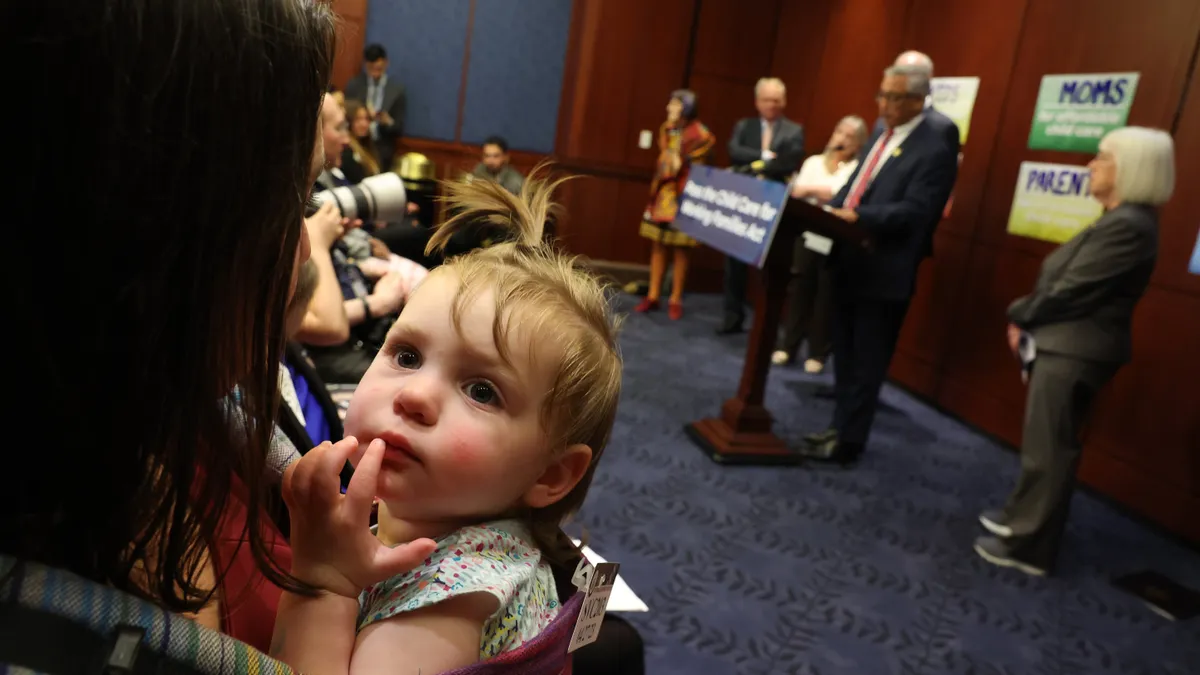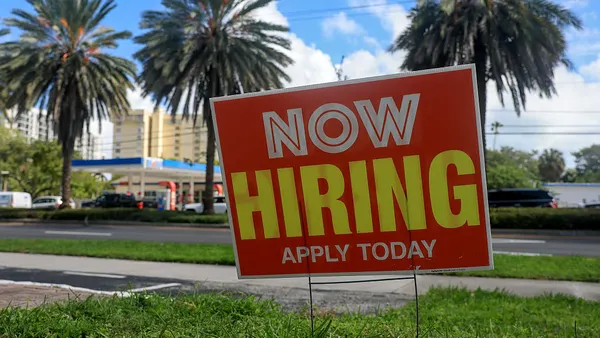Dive Brief:
- Higher pay, more frequent salary boosts and increased training opportunities represent three main changes North American employers are making to ease talent concerns and attract, retain and engage workers, according to a survey from Willis Towers Watson released August 3.
- Nearly 9 out of 10 (86%) of employers are hiring candidates at the higher end of salary ranges, the survey found. Thirty-one percent are considering or planning to adjust employee salaries more frequently. And 55% are increasing training opportunities.
- With ongoing inflation and continued labor shortages, this is the moment for employers to adjust their overall compensation plans and rethink strategies “on how work gets done and rewarded,” Lori Wisper, WTW’s leader of work and rewards global solutions, stated in the release.
Dive Insight:
Money is clearly part of the equation. A Pew Research Center study released in March found that 63% of people who left a job said low pay numbered among the reasons they quit. By switching jobs, many appeared to get the pay they wanted.
But adjusting compensation philosophies to meet long-term concerns is a challenge. Take inflation. That and COVID-19 have made forecasting the cost of employee healthcare claims more difficult, a Mercer actuary who participated in a recent webinar noted. Employers may need to reforecast claims multiple times, the actuary said.
What about factoring inflation into a pay strategy? It’s tricky and not typically done, a Mercer partner noted. Employers are instead relying on bonuses and incentives, and the current approach has led to larger increases in wages than if they were indexed to the consumer price index, the partner said.
Salary compression is another issue, with employees being hired at salaries in the higher range, WTW’s Wisper pointed out. This brings up concerns over internal equity between rewards for new hires and rewards for longer-standing employees, Wisper explained.
To address competitive pay issues, some employers have turned to strategies such as “off-cycle” increases to prevent needed talent from leaving. Deloitte performed an additional compensation market analysis that effectively gave many employees a pay raise halfway through the annual cycle.
However, compensation isn’t the whole picture. Anxious for career growth they feel was delayed by COVID-19, Gen Zers are demanding upskilling on the job and more opportunities to practice what they learn, the National Academy Foundation’s chief partnership officer recently told HR Dive.
NAF is a nonprofit that forges partnerships between high schoolers, primarily students of color, and employers in the engineering, finance, IT, health sciences and hospitality and tourism industries. Centered on job-based learning, NAF primes Gen Z for the workplace, provides an antidote to staffing issues and offers a diverse solution to workforce development, the CPO said.
Employee well-being is another retention issue, and employers are keen on addressing it: 84% of the survey’s respondents said they’re increasing flexibility in where and how employees work. “Employers recognize they will need to pull levers in addition to compensation and reinforce a connection to the overall employee experience,” Lesli Jennings, WTW’s North America leader for work, rewards and careers, said.
Learning & development may enhance this connection, the co-founder of an eLearning platform wrote in an op-ed for HR Dive. Through interactive courses, L&D can provide an engine for community building and create meaningful engagement between corporate leaders and learners. It can also provide flexible learning to strengthen employee well-being through mental health courses, such as those that help employees identify stress triggers, the op-ed said.










